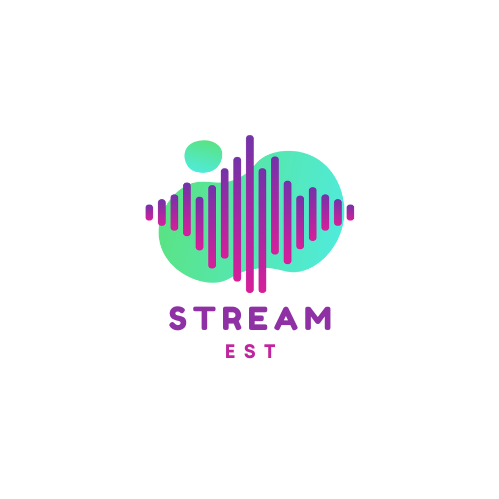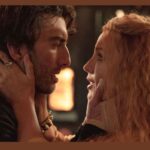Minecraft (2009) game icons banners, originally developed by Markus “Notch” Persson in 2009 and launched into international popularity due to their extensive customizability features, quickly became an international craze. Banners and game icons are standout features. Banners let players design unique symbols, showcasing achievements, alliances, or personal style, adding visual appeal to their worlds. Game icons enhance personalization by allowing customization of interface elements, making navigation easier and the game more enjoyable. Overall, customizing banners and game icons enriches the Minecraft experience, making it a personal and creative adventure for every player.
History of Minecraft (2009)
Minecraft, created and published by Mojang Studios’ Markus “Notch” Persson in 2009 and widely enjoyed since has quickly captured millions of players ever since its 2009 debut. Players experience its unique blend of creativity, exploration, and survival features – building virtual worlds out of cubes in 3D procedurally generated environments offers players limitless creative potential as they face survival challenges that have made Minecraft such a cultural phenomenon. With numerous updates and educational editions, Minecraft fosters both individual and collaborative creativity, appealing to players of all ages and cementing its place as a beloved game in the community.
What Are Minecraft Game Icons?
Minecraft icons serve as a visual language that players quickly learn to recognize and associate with game elements. These icons are crucial for the user experience, simplifying navigation and object identification. For example, seeing a diamond icon instantly conveys its value and use in crafting. Intelligent design reduces cognitive load, freeing players up for exploration and creativity. Icons also enhance immersion by maintaining visual consistency across a cohesive game world. As Minecraft evolves, these icons remain vital for both new and experienced players.
Importance of Minecraft Game Icons
Game icons are vital for simplifying gameplay and boosting efficiency and enjoyment. Instead of reading text, players can quickly understand an item by glancing at its icon, which is essential during fast-paced moments requiring quick decisions. For example, recognizing a health potion or weapon icon in high-pressure situations can determine success or failure. Icons streamline the interface, reducing search time and keeping players immersed in the game. Well-designed icons convey key information like rarity, durability, or effect at a glance. This efficiency enhances the user experience, making the game intuitive and engaging for both new and experienced players.
How to Use Minecraft Game Icons
Using game icons makes item management easy and fun. When you open your inventory, each item has a unique icon, helping you find and sort your stuff quickly. Clicking an icon lets you move items easily, saving time and avoiding frustration.
Many players also create custom icons to match their style, making their inventory look better and highlighting important items. This makes the game more engaging and immersive.
Whether standard or custom, game icons help all players, from casual to hardcore, manage their items smoothly, allowing more focus on the adventure. Game icons are key to a better and more personalized gaming experience.
Types of Icons in Minecraft
Minecraft features a wide range of icons, each representing a specific category of objects or entities:
Block Icons: Represent various blocks like dirt, stone, and wood, used for building and crafting.
Item Icons: Include tools, weapons, and food items, each with a distinct appearance to help identify them quickly.
Entity Icons: Depict creatures and mobs in the game, like cows, zombies, and villagers.
Effect Icons: Show status effects on the player, such as potion effects or enchantments.
Custom Icons: Created by players to add a personal touch or highlight specific items, enhancing the game’s visual appeal and functionality.
Factors to Consider When Designing Icons
Functionality: Icons must convey clearly their purpose or function for any object or entity associated with them.
Clarity: To create effective icons, each should be readily identifiable and distinguishable from its peers.
Simplicity: Keep designs basic to ensure quick comprehension at a glance.
Consistency: Establish one style across all icons for an integrated appearance.
Color: Use colors that enhance visibility and differentiate between icons.
Size: Ensure icons are appropriately sized for their intended use and display context.
Functionality: Create icons that are functional and user-friendly, aiding user interaction and navigation.
Aesthetics: Craft attractive icons to improve overall user experiences.
Using Minecraft Banners

Minecraft banners enable players to add an individual touch to their worlds by crafting them out of wool and sticks before customizing with patterns and colors using a loom or crafting table. Banners can then be placed as decorative items on walls, shields, maps and anywhere else where banners might add aesthetic value, such as walls. By customizing each design independently players can enhance gameplay experience while showing their creativity while enjoying these versatile customization options in Minecraft.
You Also May Like: Coomer-Party
Future of Minecraft Icons and Banners

As Minecraft expands and adapts, its visual identity – including icons and banners – may undergo further refinement and adaptation.
As New Technologies Evolve: With advancements in graphics and rendering techniques, Minecraft may adapt its visual style accordingly while maintaining its distinctive aesthetic.
As new elements such as features, biomes and gameplay mechanics are introduced into a game world, the icon and banner systems must expand accordingly to keep pace.
By continually refining Minecraft, this ongoing refinement process ensures it stays engaging and visually pleasing while at the same time adapting to emerging possibilities.
Conclusion
Minecraft makes use of game icons and banners as integral parts of its design and community.Icons show various blocks, items, and entities, making navigation simplePlayer can create customized banners as representations of identity and achievements, adding depth to the game.
Minecraft icons have been carefully designed for easy recognition across age, language and cultural divides making the game easily accessible worldwide.
The banner system encourages creativity and self-expression, letting players craft their own symbols. This builds a sense of ownership and pride, turning banners into tools for storytelling and community building.
As Minecraft grows, its visual elements will stay important. Through new tech, better customization, or fresh designs, the game’s icons and banners will keep evolving, enriching the Minecraft universe.
FAQS
Q: What Is Minecraft?
A: Minecraft provides an immersive world where players can explore, build, and thrive using creative and survival elements.
Q: How can one play Minecraft?
A: In Minecraft, players gather resources to build and craft tools, managing survival challenges in survival mode.
Q: What are Minecraft icons?
A: Icons in Minecraft are visual symbols representing blocks, items, entities, and effects. They help players identify and interact with gameplay elements.
Q: How do you create a banner in Minecraft?
A: To create a banner, players need wool and a stick. Wool determines the banner’s base color.
Q: Can icons and banners be customized in Minecraft?
A: Both icons and banners can be customized. Icons are predefined but can be changed with resource packs. Banners use dyes.
Q: Are there any special banners in Minecraft?
A: Special banners include the Illager banner, dropped by Illager captains, and the Mojang banner pattern.
Read Next: Streamest






